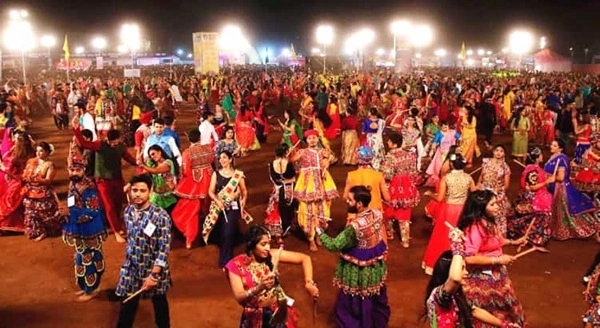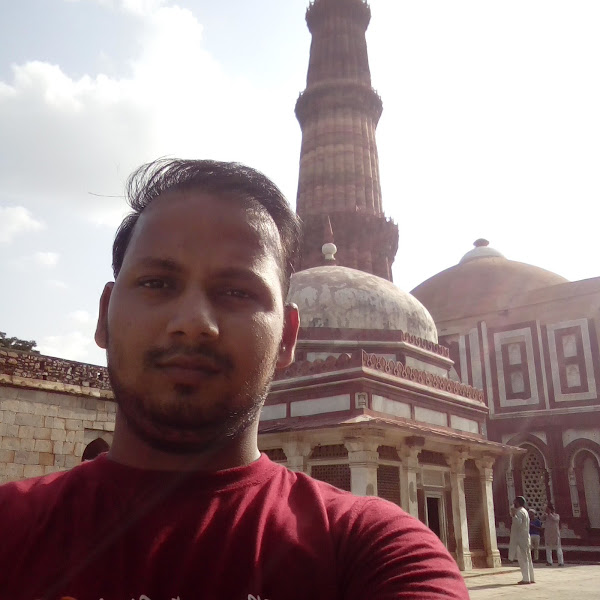Gujarat, the land of colorful festivals, handicrafts, and traditions, is one of India’s most vibrant cultural states. With a history shaped by dynasties, traders, and diverse communities, Gujarat is known for its art, crafts, music, and especially its traditional and folk dances. These dances are not just forms of entertainment but are deeply rooted in religious devotion, social unity, and community celebrations.
Among them, Garba and Dandiya Raas stand as the most famous, performed with unmatched enthusiasm during Navratri, a festival celebrated worldwide by Gujaratis. But the cultural fabric of Gujarat is much richer, with many unique dance forms that reflect the rural lifestyle, legends, and devotion to gods and goddesses.

Major Traditional and Folk Dances of Gujarat
| Dance Name | Type | Region/Community | Short Description |
| Garba | Devotional/Folk | Across Gujarat | A circular dance performed during Navratri in honor of Goddess Amba. |
| Dandiya Raas | Festive Folk | Saurashtra, Urban Gujarat | Dance with decorated sticks performed during Navratri nights. |
| Tippani Dance | Rural/Folk | Chorwad, Saurashtra | Women perform with long wooden sticks used for leveling floors. |
| Bhavai | Theatrical Folk | North Gujarat | Folk theater with dance, drama, and satire. |
| Raas | Devotional/Folk | Mathura–Gujarat link | Inspired by Krishna’s Raas Leela with rhythmic claps and steps. |
| Padhar Dance | Community Folk | Padhar Tribe (Kheda, Ahmedabad) | Performed by fishermen reflecting aquatic life. |
| Dang Lilo | Tribal Folk | Dang District | A tribal dance with vigorous drumming and steps. |
| Hudo | Festive Folk | Bharwad Community | Performed during marriages and fairs with clapping rhythms. |
| Rathwa Dance | Tribal Ritual | Chhota Udepur, Vadodara | Ritual dance with Pithora paintings in the background. |
| Mer Dances | Martial Folk | Saurashtra | Dance of the Mer community showcasing valor. |
Detailed Explanation of Major Dances
- Garba – The Iconic Dance of Gujarat
- Origin: Rooted in devotional practices, performed around a clay lamp or image of Goddess Amba.
- Cultural Significance: Symbolizes fertility, devotion, and the cosmic cycle of life.
- Costumes: Women wear Chaniya Choli (embroidered skirts and blouses) with dupattas, men wear kediyu and dhoti.
- Instruments: Dhol, dholak, harmonium, claps form the rhythm.
- Occasions: Primarily during Navratri, also in weddings and temple festivals.
- Image Suggestion: Large group of women in colorful chaniya cholis dancing in circles during Navratri.
- Dandiya Raas – The Stick Dance
- Origin: Inspired by the mythological fight between Goddess Durga and Mahishasura.
- Cultural Significance: Known as the “Sword Dance,” symbolizing valor and festivity.
- Costumes: Men wear kediyu and turbans; women wear lehengas with mirror work.
- Instruments: Dhol, nagada, and wooden dandiyas (sticks).
- Occasions: Navratri nights, weddings, cultural programs.
- Image Suggestion: Men and women performing with colorful dandiyas.
- Tippani Dance – The Work Song Turned Dance
- Origin: Started by women in Saurashtra while leveling mud floors with long sticks.
- Cultural Significance: Reflects women’s labor, strength, and joy in unity.
- Costumes: Sarees with Gujarati draping style, jewelry.
- Instruments: Folk songs, claps, rhythmic beating of sticks.
- Occasions: Festivals, community functions, marriages.
- Image Suggestion: Group of women holding long wooden sticks in rhythmic formation.
- Bhavai – The Folk Theater Dance
- Origin: Evolved in North Gujarat as a folk theater tradition blending satire, drama, and dance.
- Cultural Significance: Known for social commentary on caste, gender, and politics.
- Costumes: Simple colorful attire, with actors sometimes cross-dressing for comic roles.
- Instruments: Harmonium, tabla, cymbals.
- Occasions: Village fairs, community gatherings.
- Image Suggestion: Bhavai performers acting out a dramatic folk scene.
- Raas – The Dance of Krishna
- Origin: Inspired by Raas Leela of Lord Krishna with Gopis, later adapted by Gujarati communities.
- Cultural Significance: Represents divine love, joy, and devotion.
- Costumes: Traditional Gujarati attire, sometimes Krishna-Radha themed.
- Instruments: Flute, dhol, cymbals.
- Occasions: Janmashtami, Navratri, temple festivals.
- Image Suggestion: Devotees dancing in circles with claps in a temple courtyard.
- Padhar Dance – The Fishermen’s Dance
- Origin: Performed by the Padhar tribe, primarily fishermen of Gujarat.
- Cultural Significance: Showcases life around water, fishing activities, and aquatic spirit.
- Costumes: Tribal attire with dhotis, turbans, and ornaments.
- Instruments: Dhol, manjira (cymbals).
- Occasions: Tribal festivals, community events.
- Image Suggestion: Men performing rhythmic movements near a river.
- Dang Lilo – The Dance of the Dangi Tribe
- Origin: Performed in Dang district, reflecting tribal energy and traditions.
- Cultural Significance: A vigorous dance showcasing unity, courage, and celebration.
- Costumes: Tribal dresses with headgear and jewelry.
- Instruments: Heavy drumming, wind instruments.
- Occasions: Holi, Diwali, community feasts.
- Image Suggestion: Dangi men and women dancing in vibrant attire.
- Hudo – The Rhythmic Clapping Dance
- Origin: Dance of the Bharwad shepherd community.
- Cultural Significance: Performed during marriages and fairs, symbolizing joy and social bonding.
- Costumes: Men wear dhotis and turbans, women wear ghagras with mirror work.
- Instruments: Hand claps and dhol.
- Occasions: Marriage ceremonies, fairs.
- Image Suggestion: Bharwad men and women clapping rhythmically in groups.
- Rathwa Dance – Ritual with Pithora Paintings
- Origin: Performed by Rathwa tribe in Chhota Udepur and Vadodara.
- Cultural Significance: Linked with Pithora wall paintings, invoking blessings of deities.
- Costumes: Colorful tribal attire, body paint.
- Instruments: Flutes, dhols, tribal drums.
- Occasions: Rituals, harvest festivals.
- Image Suggestion: Rathwa tribe performing before sacred paintings.
- Mer Dances – The Martial Heritage
- Origin: Performed by the Mer community of Saurashtra, known for their warrior past.
- Cultural Significance: Represents valor, martial skills, and pride of the Mer tribe.
- Costumes: Men wear traditional turbans, weapons used as props.
- Instruments: Dhol, nagada.
- Occasions: Community gatherings, fairs, festive events.
- Image Suggestion: Men performing martial steps with swords and shields.
FAQs
Q1. Which is the most famous dance of Gujarat?
👉 The Garba dance, performed during Navratri, is the most famous dance of Gujarat.
Q2. How many folk dances does Gujarat have?
👉 Gujarat has over 15 traditional and folk dances, including Garba, Dandiya Raas, Bhavai, Tippani, and Hudo.
Q3. Which dance is performed with sticks in Gujarat?
👉 Dandiya Raas is performed with decorated sticks, popularly during Navratri.
Q4. Which dance is connected with Goddess Amba?
👉 Garba is performed in devotion to Goddess Amba during Navratri.
Conclusion
The traditional and folk dances of Gujarat are not just artistic expressions but the heartbeat of its cultural identity. From the divine Garba and Raas to the tribal Dang Lilo and Rathwa, every dance reflects the state’s devotion, unity, and festive spirit.
They celebrate gods, nature, community bonds, and heroic traditions, making Gujarat a cultural hub recognized worldwide. Whether in rural villages or urban Navratri nights, these dances keep the soul of Gujarat alive across generations.

Hello, I’m Kapil Kumar, a seasoned SEO expert and blogger at WinnersList.in. My mission is to spotlight exceptional individuals and organizations across various domains. Through curated lists, profiles, and inspiring stories, I aim to celebrate outstanding achievements and inspire the next generation of champions. Join me in this journey.
